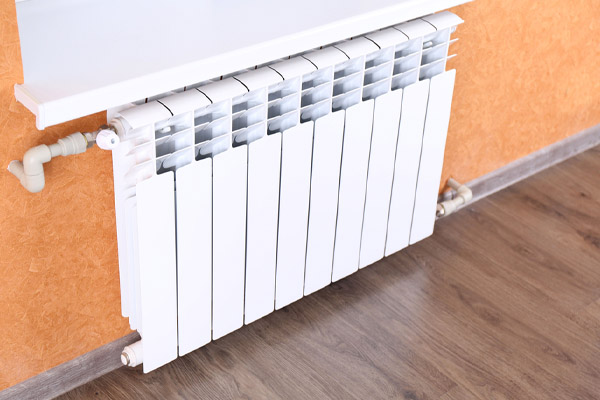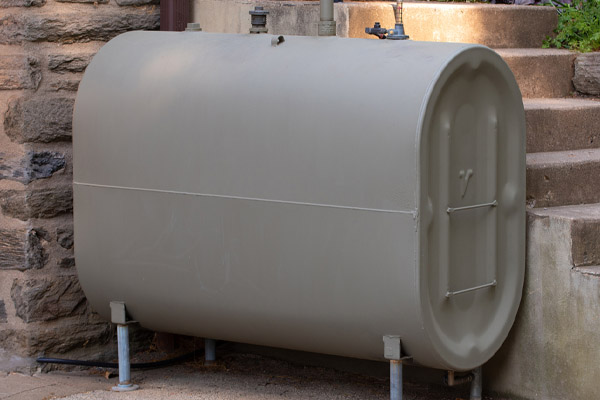Table of Contents
Homeownership involves numerous responsibilities, including HVAC system maintenance, which can be easy to neglect, particularly with oil heating systems. If you’re new to an oil-heated home or haven’t checked your oil tank recently, it’s time to give these crucial elements the attention they need.
Your fuel oil is critical in maintaining a secure, cozy home environment. The last thing you want is to find yourself without heating oil when you need it most, especially during unforgiving weather conditions. When a sudden refill might not be readily available for several days, staying proactive is paramount, particularly if you’ve chosen to use will call or C.O.D. oil delivery options.
If you find yourself needing a heating oil tank replacement, you might be pondering whether a different tank size is necessary. Assessing whether your current heating oil tank size aligns with your specific oil consumption requirements is imperative.
Recognizing the Significance of Oil Tank Size

Many homes use heating oil for a warm environment. If it’s your main heating source, familiarizing yourself with your home’s heating needs is crucial. Understanding your fuel usage helps determine the right heating oil tank size. Knowing your tank’s size also guides when to plan fuel deliveries. Here’s why it’s important to know your oil tank size:
- Estimate Your Remaining Heating Oil Level: Understanding your tank’s size provides valuable insights into your remaining oil supply. Some older tanks lack built-in gauges to indicate when you’re running low on oil. If you find yourself in this situation, a straightforward calculation can help determine the remaining oil quantity.
- Plan Your Winter Oil Purchase: Armed with knowledge about your tank’s size and your current oil level, you can make informed decisions about how much oil to buy to see you through the winter season. This proactive approach allows for effective planning and budgeting in alignment with your heating needs.
- Enhance Your Consumption Awareness: Familiarity with your heating oil consumption patterns helps you become a more mindful and efficient energy consumer. This knowledge enables you to make conscious efforts to conserve heat effectively.
- Prevent Running Out of Oil: The most crucial reason for understanding your oil tank’s size is to ensure you never run out of heating oil. Facing the bitter cold without a heat source can pose significant risks, particularly if there are children or elderly individuals in your household. Prioritizing this knowledge is paramount for your family’s safety and comfort.
Determining the Right Time to Upgrade Your Home Oil Tank
The decision to upgrade your existing oil tank is significant, and having a clear understanding of the reasons behind it can simplify the process of selecting the appropriate size. Some compelling factors to consider for an oil tank upgrade may encompass:
- If your current tank is old and displaying signs of defects or wear, it may be a prudent time to upgrade for safety and efficiency reasons.
- Changes in your household, such as an increase in family size or alterations to your heating requirements, may necessitate a larger oil tank to meet your heating demands adequately.
- Opting to purchase heating oil in bulk can often yield cost savings. To maximize these economic advantages, you might require a larger oil storage tank to accommodate larger quantities of oil.
Understanding Heating Oil Tank Sizes

Understanding oil tank measurements is essential. Capacity, usually in gallons, indicates how much oil a tank can hold, while dimensions in inches reflect width, height, and depth. Knowing these helps you understand the tank’s oil capacity.
To find the right heating oil tank size, first determine your current tank’s capacity. Older tanks may not have labels, requiring manual measurement, while modern ones often have size labels, easing the process.
Residential oil tanks typically hold 275 gallons, but other sizes like 288, 340, 420, 500, 550, 675, and 1000 gallons are available, with commercial tanks sometimes exceeding 30,000 gallons to suit various needs.
Key Considerations for Purchasing A Heating Oil Tank

When looking for the right heating oil tank size for your home, several crucial factors come into play. The size you should choose primarily hinges on your household’s heating oil consumption. Here are key considerations to guide your decision:
- Space Availability: Assess the physical dimensions of your existing tank, especially if you’re considering upsizing. This evaluation will help determine if you have sufficient room for a larger tank.
- Number of Occupants: The size of your household directly influences your heating needs. As your family grows, the demand for heat increases, especially during winter. Therefore, a larger tank ensures everyone enjoys a warm and comfortable environment.
- Home Size: A practical guideline for choosing the right oil tank size is to align it with the number of rooms in your home. Smaller one-to-two-bedroom homes typically require smaller tanks, while more extensive five-bedroom residences necessitate larger ones.
- Consumption Patterns: Your household’s heating habits play a crucial role. A smaller tank may suffice if you’re mindful of energy use and tend to use heating oil sparingly. Additionally, consider any seasonal factors, such as vacations, which can impact heating oil consumption. If you’re frequently away during winter, you may save on heating oil usage.
- Emergency Preparedness: It’s advisable to leave a margin of at least 20 percent when considering your fuel consumption. This additional capacity serves as a safety net to account for unforeseen emergencies. For instance, unexpected events like snowstorms could disrupt fuel deliveries, potentially leaving you without heating for longer than anticipated.
Hire A Professional For Your Heating Oil Tank Installation
After deciding on your heating oil needs and tank size, engaging a certified supplier for installation is crucial. This ensures the tank size meets your requirements and that installation is safe and efficient.
Professional installers focus on optimal tank placement, easy access, and securing it on a stable foundation to prevent oil leaks. They also protect against temperature extremes to avoid freezing and adhere to safety standards, minimizing risks.
In Conclusion
Choosing the right heating oil tank size for your home involves several important considerations. It’s highly recommended to reach out to your local and trusted heating technician for expert guidance. Seeking professional assistance ensures a smooth and hassle-free process, encompassing both oil tank removal and installation, guaranteeing convenience and peace of mind throughout the endeavor.
Call Lake Region Energy For Superior Heating Oil Delivery Services

If you’re looking for a reliable fuel oil delivery service in southwestern Maine, look no further than Lake Region Energy. Our fuel deliveries are prompt, affordable, and provided with a friendly touch.
We take pride in providing unmatched service every time. Contact us today to learn about our various delivery plans and financing options. We also offer a comprehensive range of HVAC services to improve your home’s energy efficiency, indoor air quality, and overall comfort. Our services include heating and cooling tune-ups, repairs, installations, and more. Don’t hesitate to call us now!
For more information about our fuel deliveries and HVAC services, be sure to contact Lake Region Energy. You can click here to contact us, or you can call us at (207) 839-5500 to find out more. We offer a full line of heating and cooling repairs, maintenance services, and installations. Click the link to view our service area.
Related Articles:
